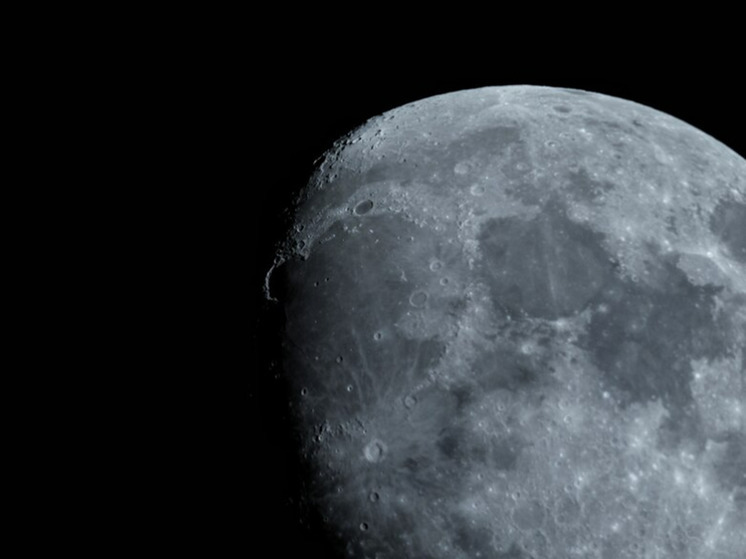The crash site was studied using images from the American LRO spacecraft
A ten-meter crater on the Moon, apparently formed by the impact of the Luna-25 spacecraft on August 19, 2023, was studied Russian scientists. The crash site of the Russian apparatus is located in the continental region of the earth's satellite, on the inner slope of a larger, 40-kilometer crater. The research results were published in the journal Solar System Research.

Let us recall that the Russian automatic station Luna-25 was launched on August 11, 2023, with the task of landing in the southern polar region of the Moon and conducting research on the soil and near-surface exosphere. It successfully reached the vicinity of the Moon and entered the orbit of its satellite. The landing of the device was scheduled for August 21. In accordance with the flight program, a braking impulse was issued on August 19 to form a pre-landing orbit. But the braking engine worked longer than planned, and the descent vehicle crashed into the lunar surface several hundred kilometers from the South Pole of the Moon.
To clarify the location of the fall of the device, employees of the Laboratory of Comparative Planetology of the Institute of Geochemistry and Analytical Chemistry named after. IN AND. Vernadsky RAS (GEOKHI), Institute of Geosphere Dynamics RAS and NPO named after. Lavochkin used photographs from the orbit of the Moon taken by the American Lunar Reconnaissance Orbiter. American specialists surveyed the supposed “lunar landing” site of Luna-25 and on August 24 received a photograph showing a fresh crater with a diameter of about 10 meters, which was not in previous photographs of this place (pictured).
“The supposed crash site of Luna 25 is located in the continental region on the inner slope of a crater with a diameter of about 40 km. This slope is steep, more than 20 degrees, which suggests that due to the movement of surface material down the slope, the soil of this place is constantly mixed and should be relatively coarse-grained,” commented Alexander Bazilevsky, chief researcher at the Laboratory of Comparative Planetology of the Geochemical Institute of the Russian Academy of Sciences, Doctor of Geological and Mineralogical Sciences. .
 The place where the crater from the fall of Luna-25 was discovered (on the right), and the same place before its fall (on the left). Photo by the press service of GEOKHI RAS.
The place where the crater from the fall of Luna-25 was discovered (on the right), and the same place before its fall (on the left). Photo by the press service of GEOKHI RAS.
In an interview with MK, Aleksandr Tikhonovich explained that the landing site of the device (which, by the way, fell apart into small pieces) is important for the lifespan of its small crater. If it had been on a flat surface, it could have existed for 20-30 million years. The fact that Luna-25 ceased to exist on the slope of another, larger crater suggests that the site of its fall may be covered with periodically sliding soil in 2-3 million years.
“We calculated the expected diameter of the crater formed by the impact of Luna-25 based on data from the Lavochkin Research and Production Association,” says Bazilevsky. “The Luna-25 landing block weighed 1,605 kg when fueled, 1,000 kg of which was fuel. The impact occurred at an angle of 45 degrees. If the device used up all or part of its fuel before impact, its mass would have decreased to 600–1000 kg. The impact velocity upon impact with the lunar surface could have been between 1 and 1.7 km/s.
These impact parameters were compared by scientists with the results of laboratory experiments in dry sand and with the sizes of craters formed by impacts on the Moon by Ranger and GRAIL spacecraft and the upper stages of the rockets that delivered the Apollo expeditions to the Moon.






















































Свежие комментарии